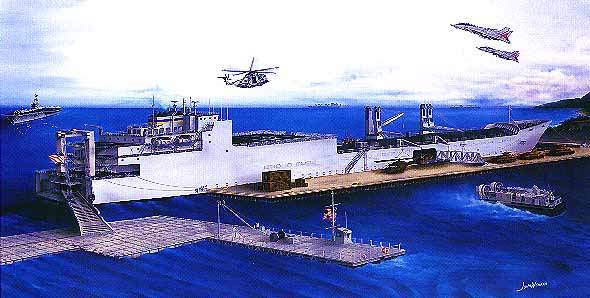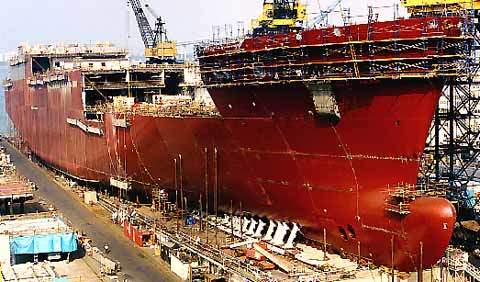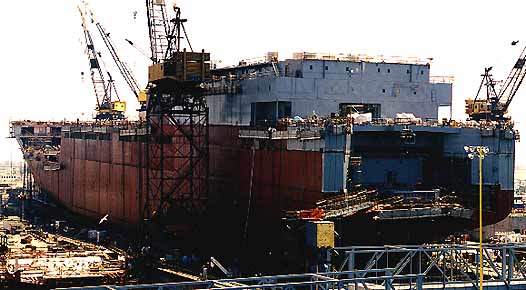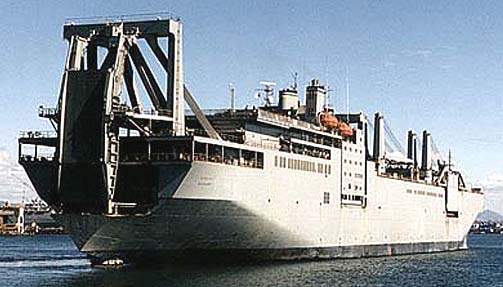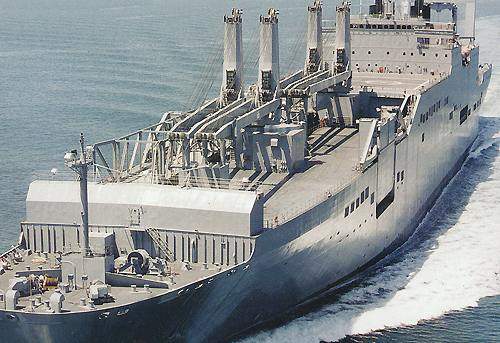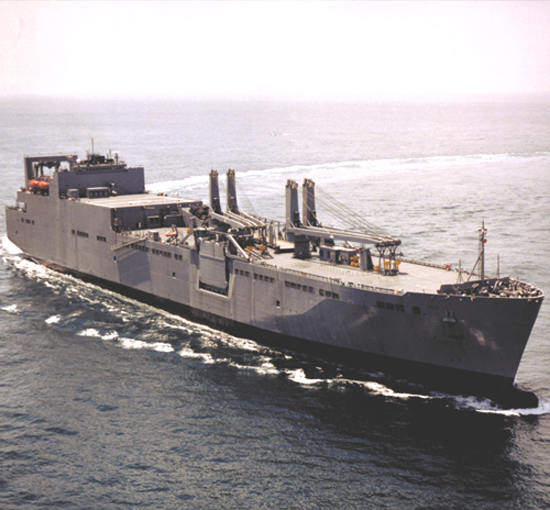The Watson Class strategic sealift ships were built for the US Navy by National Steel and Shipbuilding Company (NASSCO) of San Diego, a subsidiary of General Dynamics. The 950ft RO-RO (roll-on, roll-off) vessels are designed to transport US Army tanks, helicopters and other large items of military equipment to any location. With a beam of 106ft, the ships are the largest vessels that can fit through the Panama Canal.
Following the Gulf War, a mobility requirements study for the US Department of Defense resulted in $2.4bn being budgeted for an additional 19 sealift ships. Sealift ships are essential to military forces in the deployment of military cargo in both the prepositioning of forces for deterrence or coercion and also in the surge of military intervention. Responsibility for the US Army, Navy and Air Force sealift operations lies with the Military Sealift Command of the US Navy, whose headquarters are based in the Washington Navy Yard. The mission of the strategic sealift ships is the deployment of military cargoes to anywhere in the world. The ships carry the US Navy hull designations: T for Military Sealift Command and AKR for fast sealift ship, followed by the hull number.
NASSCO built eight vessels under contracts for the US Navy under the Strategic Sealift program. Seven vessels – Watson (T-AKR 310), Sisler (T-AKR 311) and Dahl (T-AKR 312) Red Cloud (T-AKR 313), Charlton (T-AKR 314), Watkins (T-AKR 315) and Pomeroy (T-AKR 316) – have been delivered since 1998. The final ship Soderman (T-AKR 317) was launched in April 2002 and delivered in September 2002.
In August 2002, Maersk Line was awarded five-year contract worth $400m to operate and manage the eight ships. These ships were the major transporters of military equipment during Operations Enduring Freedom and Iraqi Freedom. The ships of the US Navy’s Military Sealift Command are not armed in peacetime.
Watson Class crew
The ship accommodates a permanent crew of 13 officers and 32 unlicensed personnel with berthing, living and mess areas, recreation and office facilities. Similar facilities are provided for the supercargo crew of two officers, twelve NCOs and 36 enlisted crew members. Other facilities include leisure and community areas, a hospital complex, a laundry and workshops.
Cargo
The ship has a cargo capacity of over 13,000t with 395,000ft² of available cargo area. The ships provide self sustaining RO-RO capability, and lift-on / lift-off capability. The ship is optimised for roll-on / roll-off operations with all RO-RO decks fixed and a combination of fixed and hinged RO-RO ramps. The ship is equipped for the following operations: roll-on / roll-off and lift-on / lift-off for transport vehicles and transport containers, for cargo transfer onto a pier and in-stream up to Sea State 3. The ship is also equipped for lift-on / lift-off onto transport lighterage, i.e flat-bottomed cargo-transporting barges.
The ship has a centreline stern slewing ramp, a port and starboard sideport ramp system, two 110t single pedestal twin cranes and cargo hatches in three holds. The cargo holds are equipped with environmental control systems, foam firefighting and de-watering systems. A list control system provides stability to compensate for arrangement of the cargo.
T-AKR 310 Navigation and communication
The strategic sealift ships are equipped with a satellite navigation receiver with a global positioning system, the LORAN C long-range high-accuracy Cytac navigation system, RDF radio direction finding system, a Doppler speed log, Echo depth sounder and a comprehensive communications suite.
Propulsion
There are two gas turbine engines, GE LM2500, each with an output of 32,000bhp. There are two shafts with 24ft controllable pitch propellers providing 95rpm at full power.
The ship’s total service generating capability is 121,500kW and the emergency generating capacity is 2,000kW. The ship is equipped with bow thruster units.
The design speed, set at 90% of the maximum cruise rating and at design draft of 34ft, is 24kt. The range at the design speed of 24kt and at design draft of 34ft is 13,800 miles.

